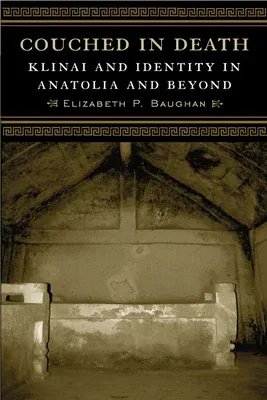In Couched in Death, Elizabeth P. Baughan offers the first
comprehensive look at the earliest funeral couches in the ancient
Mediterranean world. These sixth- and fifth-century BCE klinai from
Asia Minor were inspired by specialty luxury furnishings developed in
Archaic Greece for reclining at elite symposia. It was in Anatolia,
however--in the dynastic cultures of Lydia and Phrygia and their
neighbors--that klinai first gained prominence not as banquet
furniture but as burial receptacles. For tombs, wooden couches were
replaced by more permanent media cut from bedrock, carved from marble or
limestone, or even cast in bronze. The rich archaeological findings of
funerary klinai throughout Asia Minor raise intriguing questions about
the social and symbolic meanings of this burial furniture. Why did
Anatolian elites want to bury their dead on replicas of Greek furniture?
Do the klinai found in Anatolian tombs represent Persian influence
after the conquest of Anatolia, as previous scholarship has suggested?
Bringing a diverse body of understudied and unpublished material
together for the first time, Baughan investigates the origins and
cultural significance of kline-burial and charts the stylistic
development and distribution of funerary klinai throughout Anatolia.
She contends that funeral couch burials and banqueter representations in
funerary art helped construct hybridized Anatolian-Persian identities in
Achaemenid Anatolia, and she reassesses the origins of the custom of the
reclining banquet itself, a defining feature of ancient Mediterranean
civilizations. Baughan explores the relationships of Anatolian funeral
couches with similar traditions in Etruria and Macedonia as well as
their "afterlife" in the modern era, and her study also includes a
comprehensive survey of evidence for ancient klinai in general, based
on analysis of more than three hundred klinai representations on Greek
vases as well as archaeological and textual sources.

